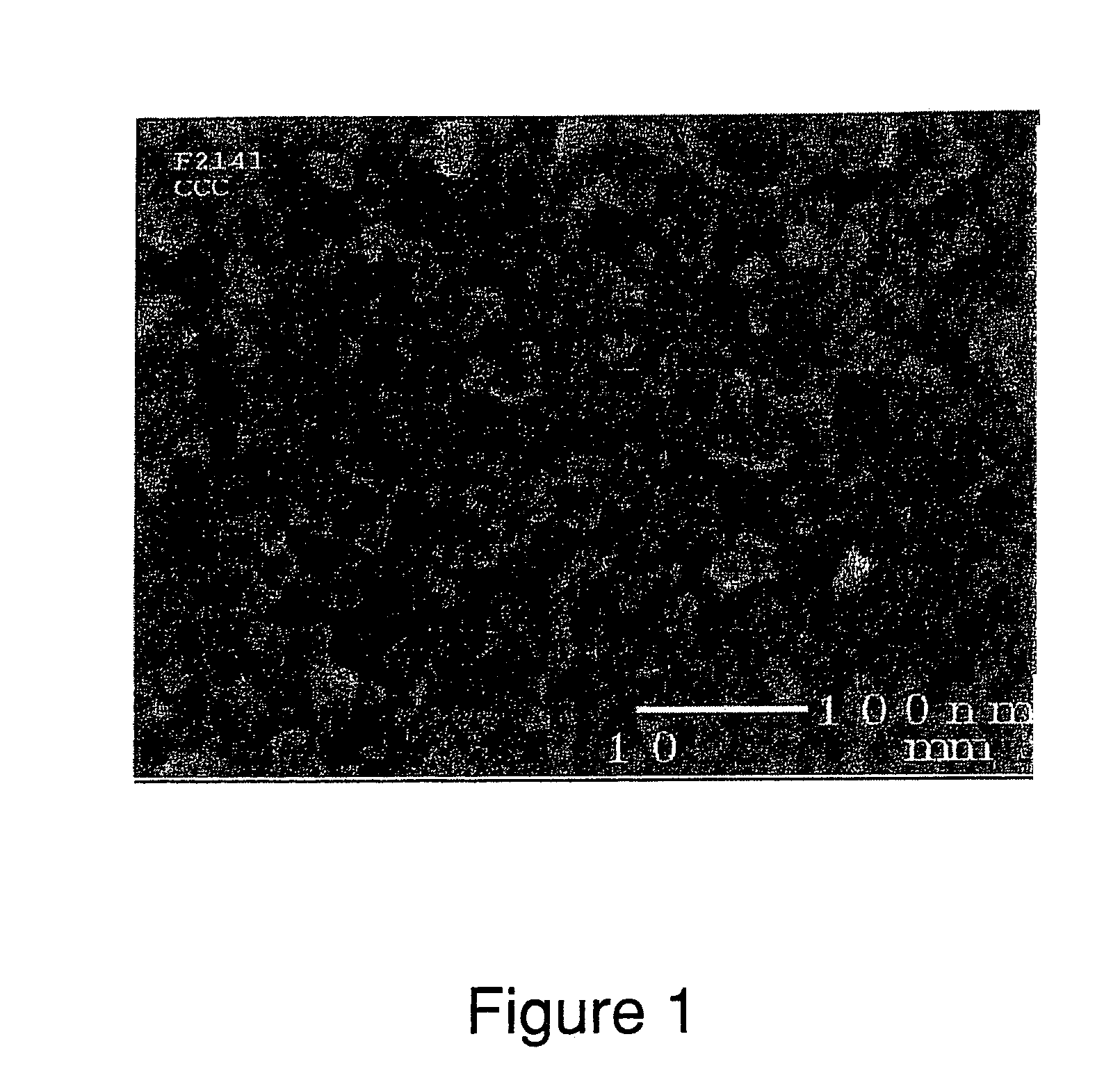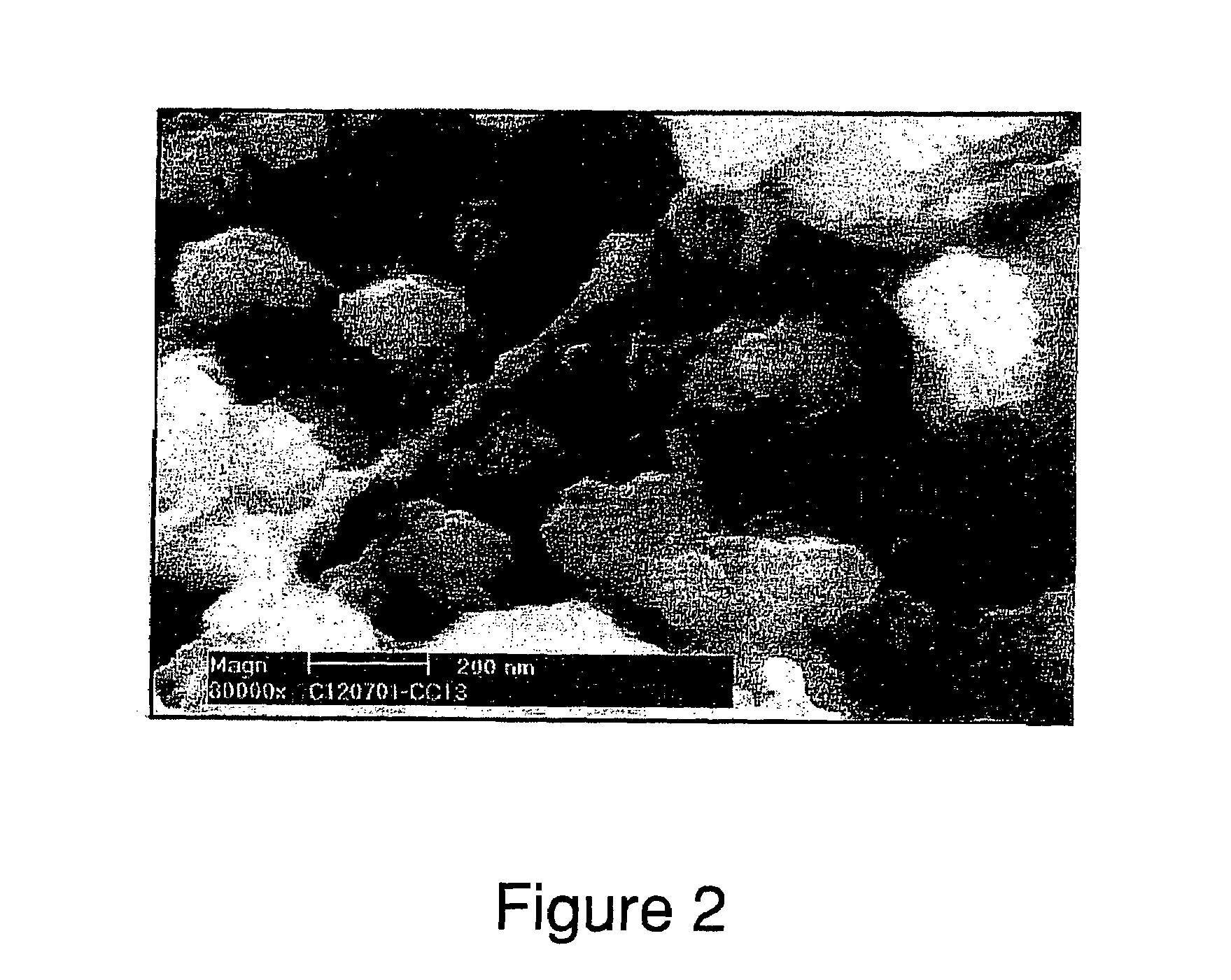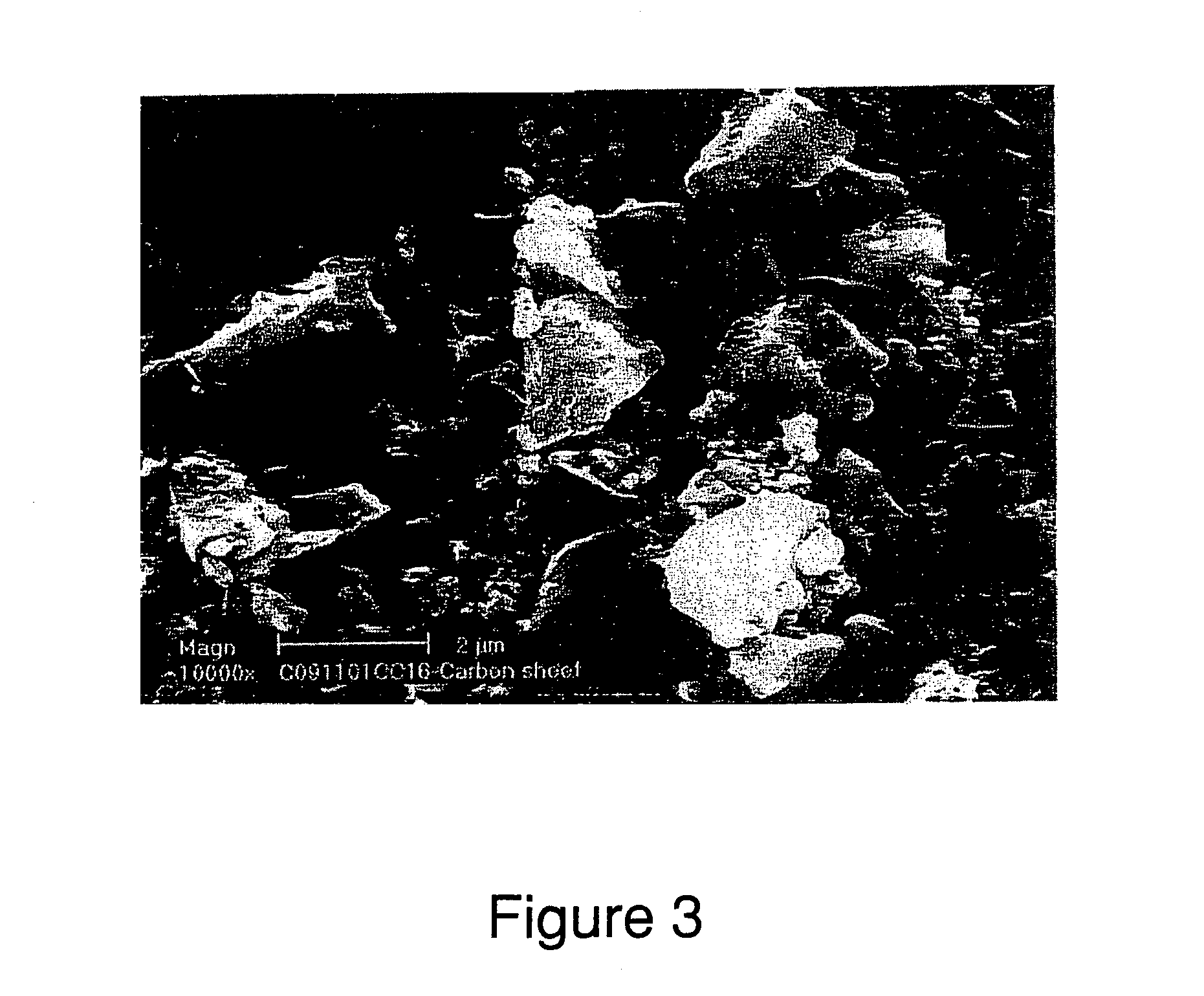Adsorbent sheet material for parallel passage contactors
a technology of contactors and adsorbent sheets, applied in the field of adsorbent materials, can solve the problems of insufficient stability or structural integrity of woven cloths, and achieve the effects of improving the efficiency of psa systems, reducing pressure drop, and maximizing the adsorption capacity of sheet adsorbents
- Summary
- Abstract
- Description
- Claims
- Application Information
AI Technical Summary
Benefits of technology
Problems solved by technology
Method used
Image
Examples
example 1
[0043]This example demonstrates that processing the nanoparticulate carbon black in a sheet form does not substantially reduce the surface area and mesopore volume of the starting carbon black material. According to one of preferred embodiments, a nanoparticulate carbon sheet containing 85% furnace carbon black (such as Black Pearls 2000 available from Cabot Corporation) and 15% PTFE (available commercially as Teflon 30 or Teflon 601A) was obtained by blending the particulate adsorbent material with PTFE in the presence of water, followed by intensive mixing to cause PTFE fibrillation, biaxial calendaring to form the sheet, and drying. A carbon sheet with thickness of 250 μm was obtained. FIG. 1 shows a SEM (scanning electron microscopy) image of the obtained material; carbon black nanoparticles with sizes in the 20–50 nm range are visible. A polymer fibril about 1000 nm long and 20 nm in diameter is seen in FIG. 2. The carbon nanoparticles bound around and between polymer fibrils f...
example 2
[0045]This example demonstrates that processing high surface area activated carbon particles in a sheet form does not substantially reduce the surface area and micropore volume of the starting activated carbon material. According to another embodiment, a carbon sheet containing 80% activated carbon particles (such as MSP20 activated carbon available from Kansai Coke & Chemical Company), 10% carbon black (such as Black Pearls 2000 available from Cabot Corporation) and 10% PTFE (available commercially as Teflon 30 or Teflon 601A) was prepared according to the procedure from Example 1. A carbon sheet with thickness of 200 μm was obtained. FIG. 3 shows a SEM (scanning electron microscopy) image of the obtained material; carbon particles of various sizes and irregular shape form an open, reinforcement-free structure. The BET surface area and the pore volume distribution were calculated as explained in Example 1. The initial activated carbon was characterized by a BET surface area of 2400...
example 3
[0046]This example demonstrates that processing carbon black material in sheet form does not significantly reduce the static VOC adsorption capacity of starting carbon black. Static adsorption of volatile organic compounds (VOC) was measured on the starting carbon black material (Black Pearls 2000) and on the derived carbon sheet material from Example 1. The samples (0.3–0.5 g) were dried at 180 C., and accurately weighed in capped glass bottles. The capped bottles were placed in desiccators containing a beaker with a few milliliters of liquid VOC (either one of toluene, carbon tetrachloride, and trimethylpentane). The lids of the desiccators were tightly closed and the bottles were uncapped. The adsorbent samples were allowed to equilibrate with the respective VOC vapors for 3 hours at room temperature. After 3 hours, the bottles were capped, removed from desiccators and accurately weighed. The weight gain represents the amount of VOC adsorbed plus the weight of saturated vapors tr...
PUM
| Property | Measurement | Unit |
|---|---|---|
| particle sizes | aaaaa | aaaaa |
| particle sizes | aaaaa | aaaaa |
| thickness | aaaaa | aaaaa |
Abstract
Description
Claims
Application Information
 Login to View More
Login to View More - R&D
- Intellectual Property
- Life Sciences
- Materials
- Tech Scout
- Unparalleled Data Quality
- Higher Quality Content
- 60% Fewer Hallucinations
Browse by: Latest US Patents, China's latest patents, Technical Efficacy Thesaurus, Application Domain, Technology Topic, Popular Technical Reports.
© 2025 PatSnap. All rights reserved.Legal|Privacy policy|Modern Slavery Act Transparency Statement|Sitemap|About US| Contact US: help@patsnap.com



